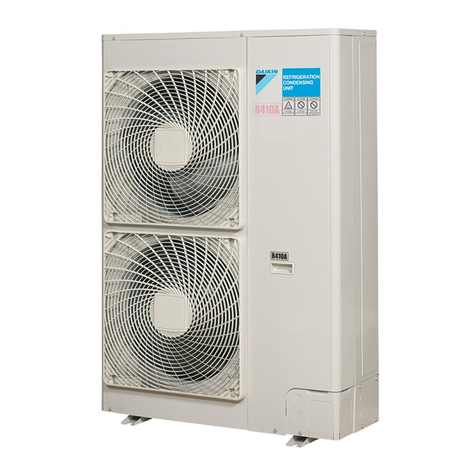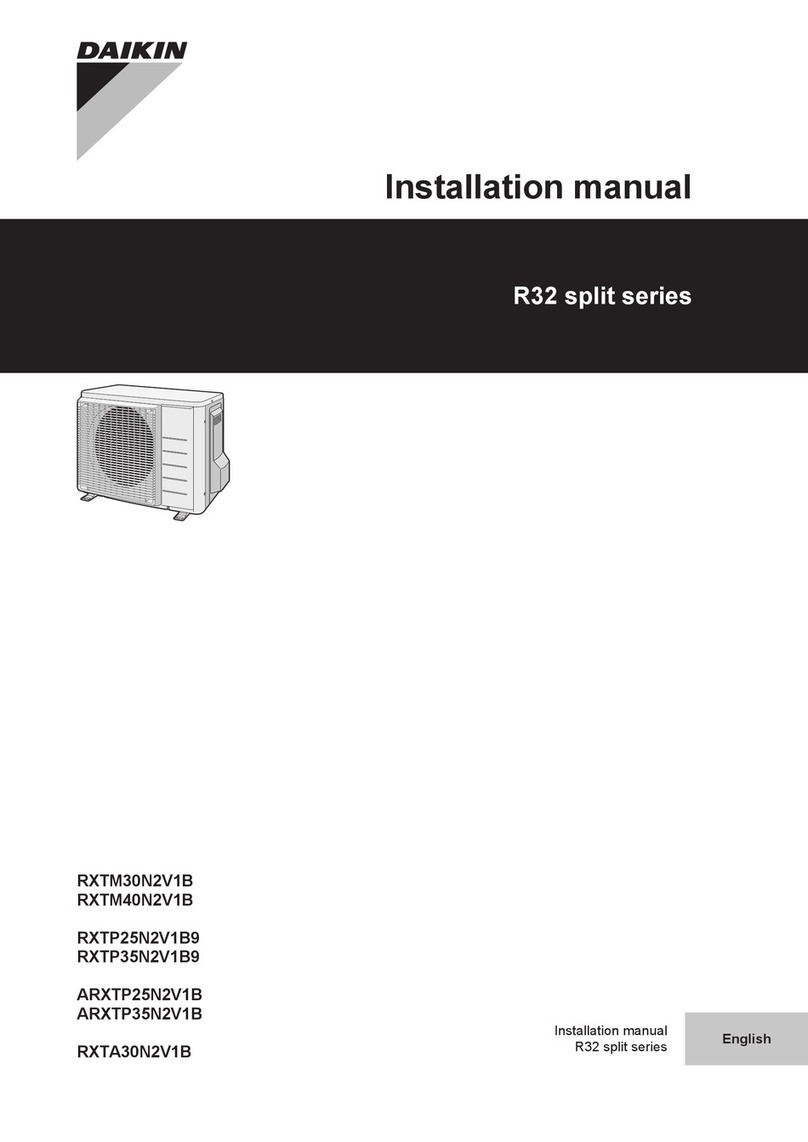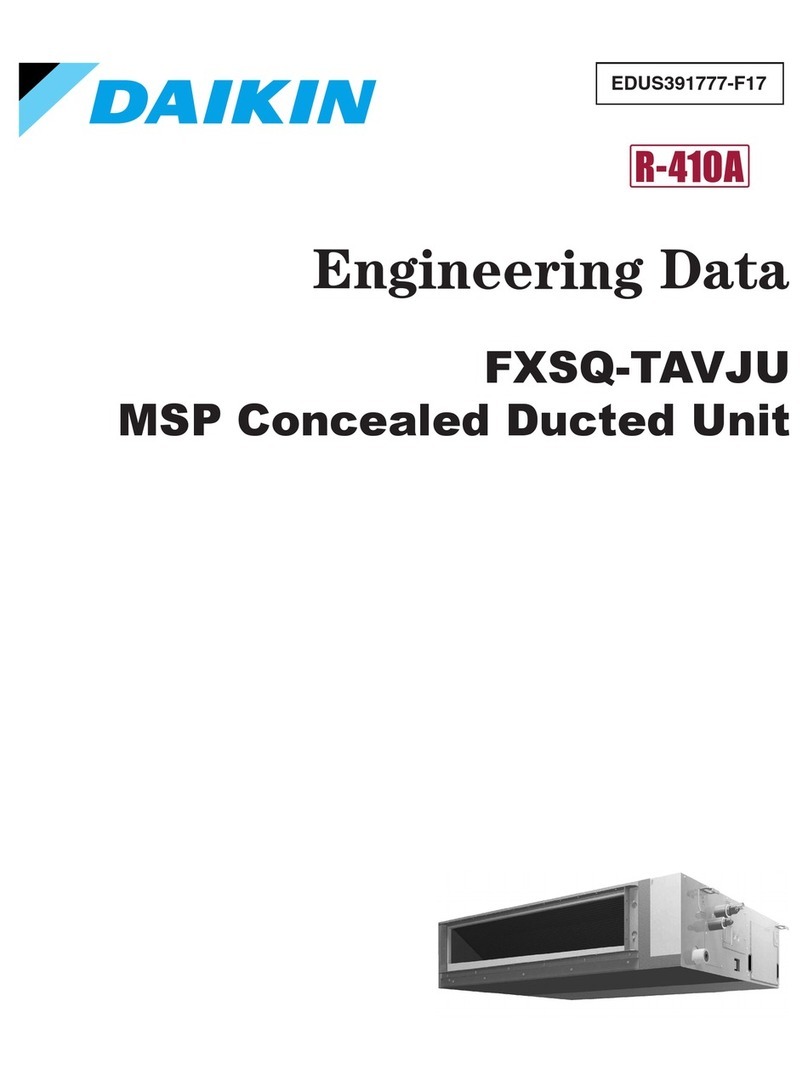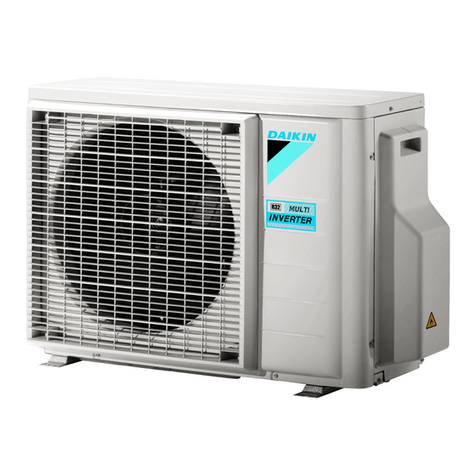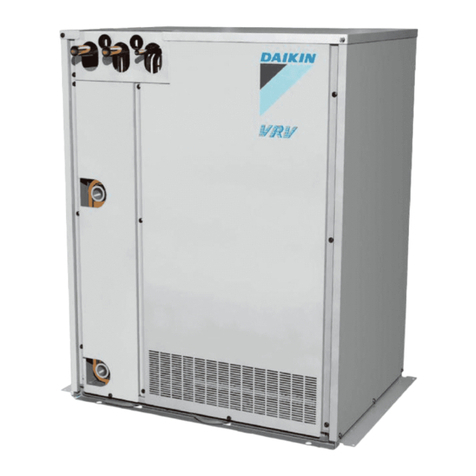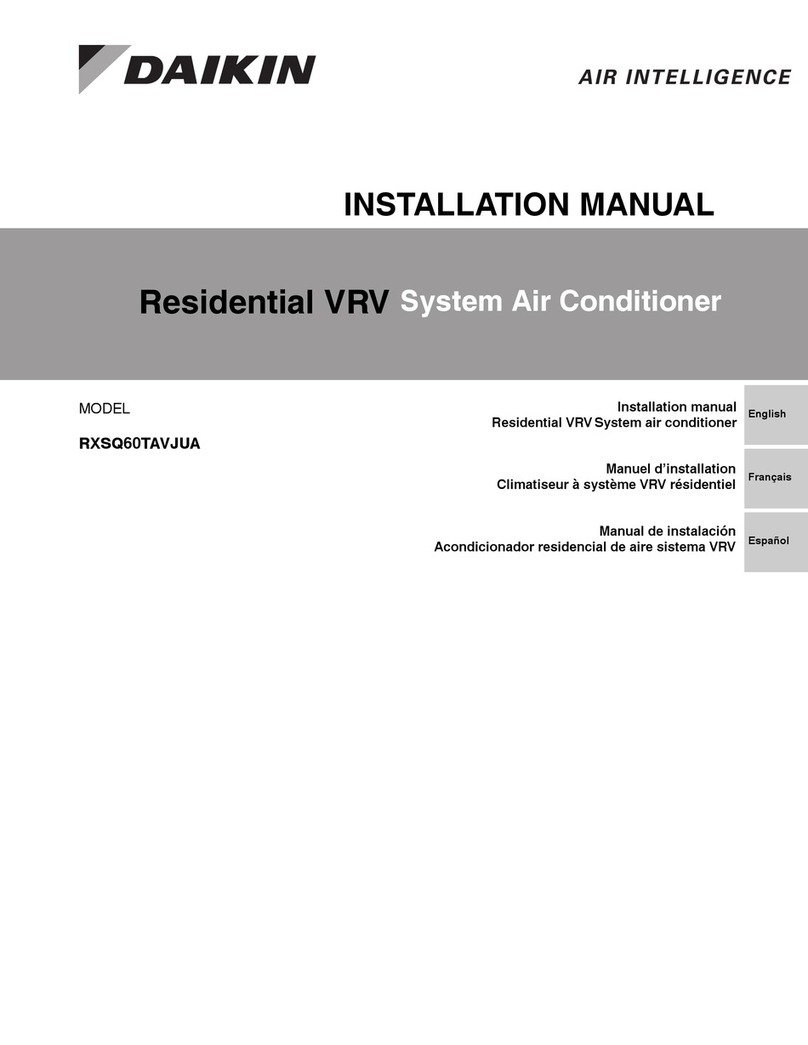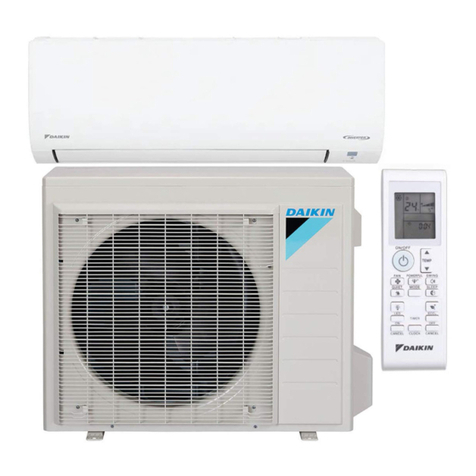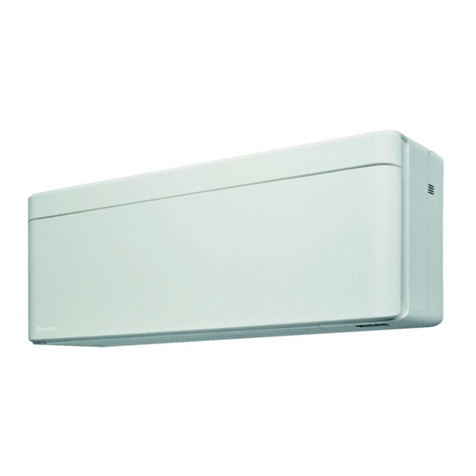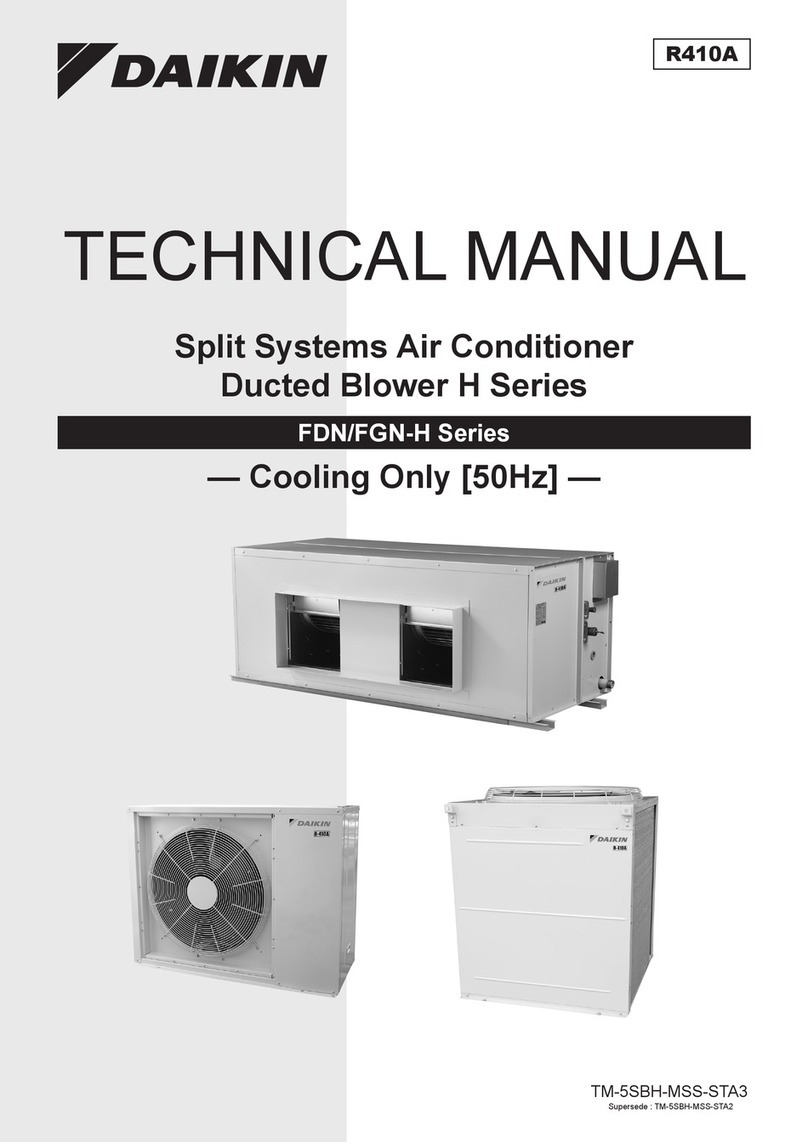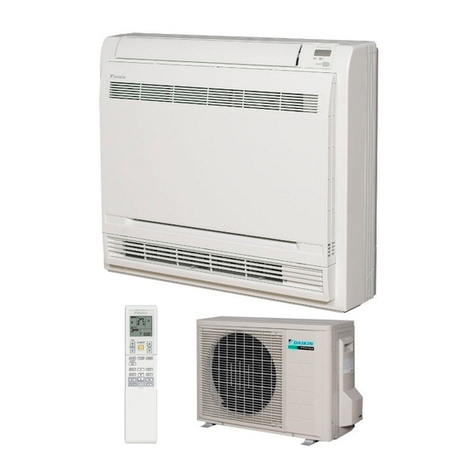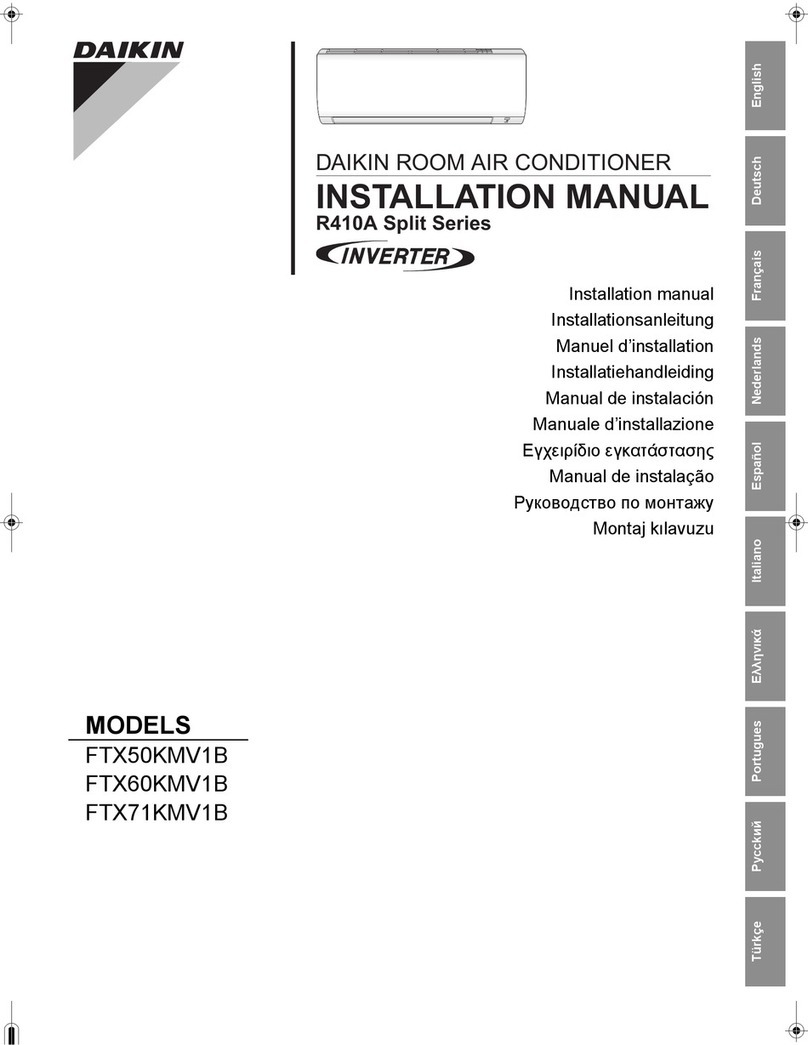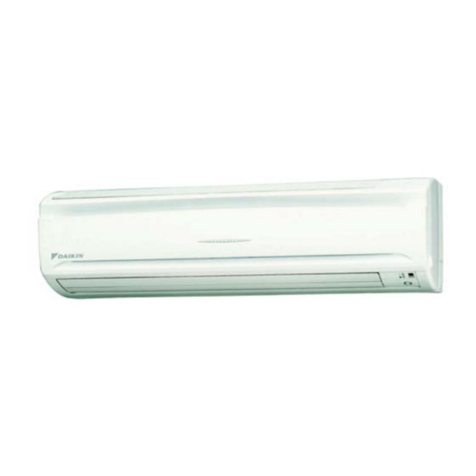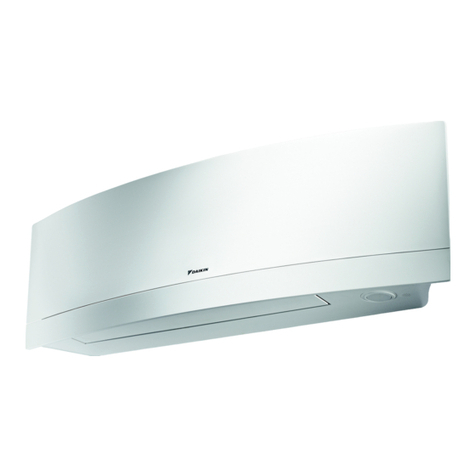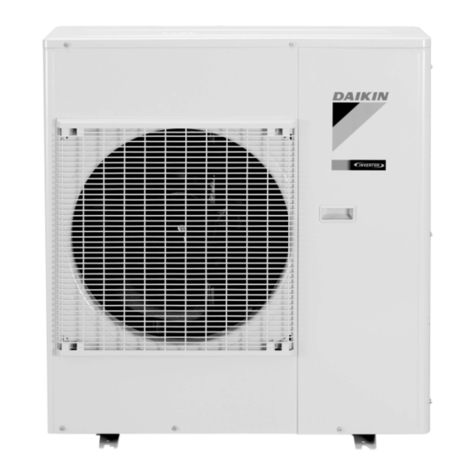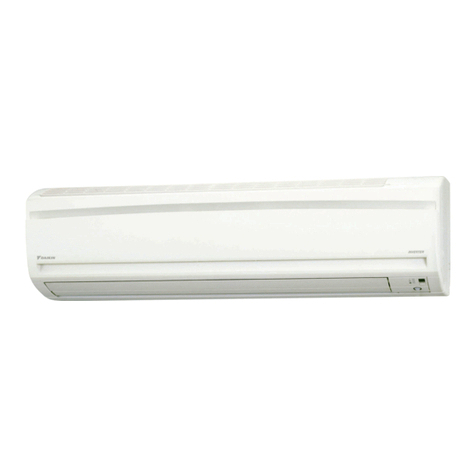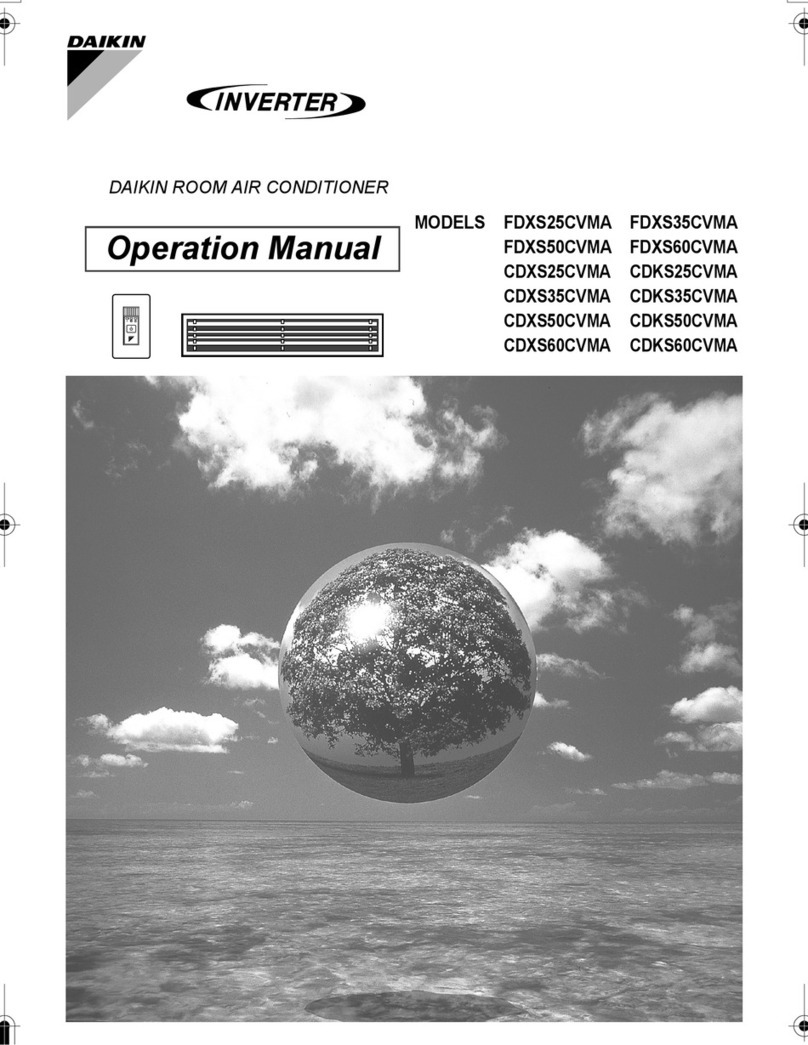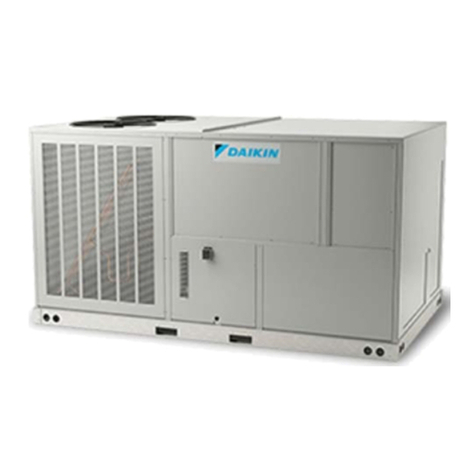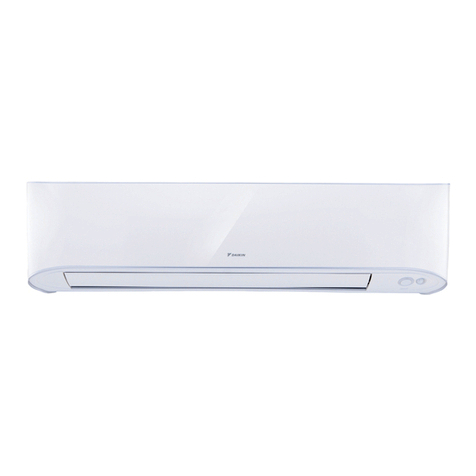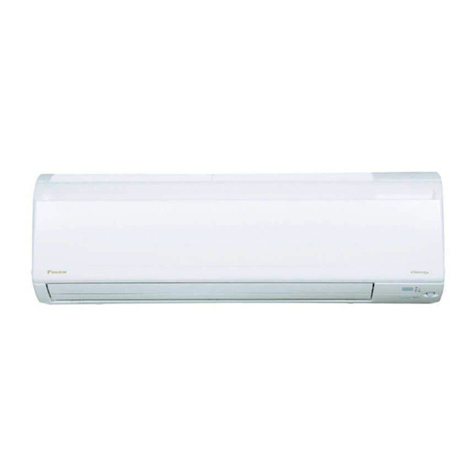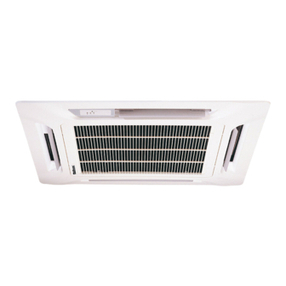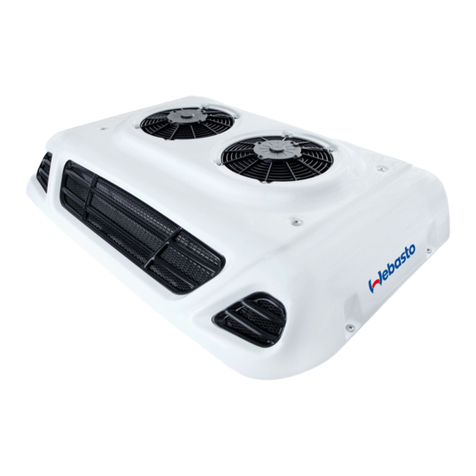
13P086154-3R English
CONTENTS
1. SAFETY CONSIDERATIONS .......................................... 1
2. BEFORE INSTALLATION................................................. 3
3. SELECTING INSTALLATION SITE .................................. 4
4. PREPARATIONS BEFORE INSTALLATION .................... 5
5. INDOOR UNIT INSTALLATION........................................ 5
6. REFRIGERANT PIPING WORK ...................................... 6
7. DRAIN PIPING WORK..................................................... 7
8. ELECTRIC WIRING WORK ............................................. 8
9. WIRING EXAMPLE AND HOW TO SET THE REMOTE
CONTROLLER ................................................................ 9
10. FIELD SETTING ............................................................ 11
11. TEST OPERATION ........................................................ 12
1. SAFETY CONSIDERATIONS
Read these SAFETY CONSIDERATIONS for Installation
carefully before installing air conditioning equipment. After
completing the installation, make sure that the unit operates
properly during the startup operation.
Instruct the customer on how to operate and maintain the
unit. Inform customers that they should store this Installation
Manual with the Operation Manual for future reference.
Always use a licensed installer or contractor to install this
product. Improper installation can result in water or refrigerant
leakage, electrical shock, re, or explosion.
Meanings of DANGER, WARNING, CAUTION, and NOTE
Symbols:
DANGER ................Indicates an imminently haz-
ardous situation which, if not
avoided, will result in death or
serious injury.
WARNING ..............Indicates a potentially haz-
ardous situation which, if not
avoided, could result in death
or serious injury.
CAUTION ...............Indicates a potentially haz-
ardous situation which, if not
avoided, may result in minor
or moderate injury. It may
also be used to alert against
unsafe practices.
NOTE .......................Indicates situations that may
result in equipment or proper-
ty-damage accidents only.
DANGER
• Refrigerant gas is heavier than air and replaces oxy-
gen.
A massive leak can lead to oxygen depletion, espe-
cially in basements, and an asphyxiation hazard could
occur leading to serious injury or death.
• Do not ground units to water pipes, gas pipes, tele-
phone wires, or lightning rods as incomplete ground-
ing can cause a severe shock hazard resulting in
severe injury or death. Additionally, grounding to gas
pipes could cause a gas leak and potential explosion
causing severe injury or death.
• If refrigerant gas leaks during installation, ventilate
the area immediately. Refrigerant gas may produce
toxicgasifitcomesincontactwithre.Exposureto
this gas could cause severe injury or death.
• After completing the installation work, check that the
refrigerant gas does not leak throughout the system.
• Donotinstallunitinanareawhereammablemate-
rials are present due to risk of explosions that can
cause serious injury or death.
• Safely dispose all packing and transportation mate-
rials in accordance with federal/state/local laws or
ordinances. Packing materials such as nails and other
metal or wood parts, including plastic packing ma-
terials used for transportation may cause injuries or
death by suffocation.
WARNING
• Onlyqualiedpersonnelmustcarryouttheinstalla-
tion work. Installation must be done in accordance
with this installation manual. Improper installation
mayresultinwaterleakage,electricshock,orre.
• When installing the unit in a small room, take mea-
sures to keep the refrigerant concentration from ex-
ceeding allowable safety limits. Excessive refrigerant
leaks, in the event of an accident in a closed ambient
space,canleadtooxygendeciency.
• Useonlyspeciedaccessoriesandpartsforinstalla-
tionwork.Failuretousespeciedpartsmayresultin
waterleakage,electricshocks,re,ortheunitfalling.
• Install the air conditioner or heat pump on a founda-
tion strong enough that it can withstand the weight
oftheunit.Afoundationofinsufcientstrengthmay
result in the unit falling and causing injuries.
• Take into account strong winds, typhoons, or earth-
quakes when installing. Improper installation may
result in the unit falling and causing accidents.
• Make sure that a separate power supply circuit is pro-
vided for this unit and that all electrical work is carried
outbyqualiedpersonnelaccordingtolocal,state
andnationalregulations.Aninsufcientpowersupply
capacity or improper electrical construction may lead
toelectricshocksorre.
• Makesurethatallwiringissecured,thatspecied
wires are used, and that no external forces act on the
terminal connections or wires. Improper connections
orinstallationmayresultinre.
• When wiring, position the wires so that the control box
cover can be securely fastened. Improper positioning
of the control box cover may result in electric shocks,
re,ortheterminalsoverheating.
• Before touching electrical parts, turn off the unit.
• This equipment can be installed with a Ground-Fault
Circuit Interrupter (GFCI). Although this is a recog-
nized measure for additional protection, with the
grounding system in North America, a dedicated GFCI
is not necessary.
• Securely fasten the outdoor unit terminal cover (pan-
el). If the terminal cover/panel is not installed properly,
dustorwatermayentertheoutdoorunitcausingre
or electric shock.
01_EN_3P086154-3R.indd 1 1/22/2015 2:28:07 PM

